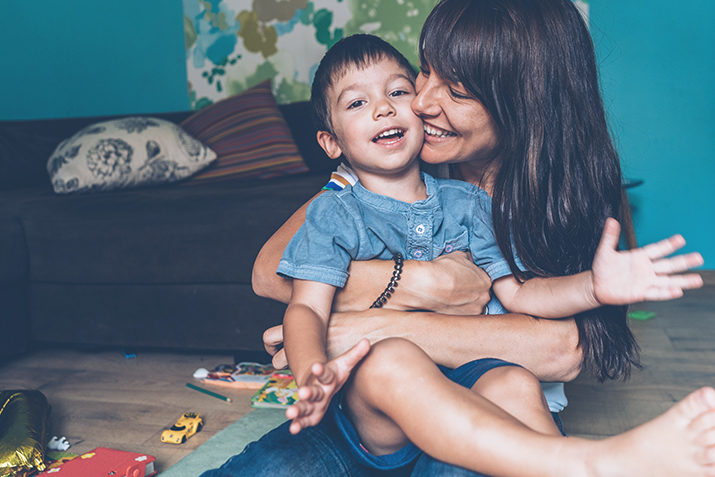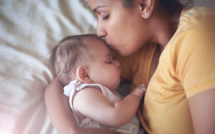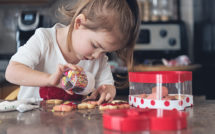
This year, help kids learn how to set and respect body boundaries. Teaching your child about healthy body limits is important because it helps them develop a sense of self, a level of confidence, and certain expectations for what is acceptable and unacceptable touch. Kids are constantly growing and learning about their bodies. Some kids are more sensitive to their environments and react differently to touch, sound, and social cues. When kids learn about body boundaries at a young age, they learn how to respect others’ bodies and react seriously to the word “no.” Teach your child about body boundaries and provide important lessons about consent, compassion, and communication.
5 Ways to Teach Kids About Body Boundaries
Have a discussion and use a safe word.
Sit down with your child and discuss the concept of body boundaries, using clear and simple language. Let them know that you will stop touching them if they don’t want to be touched. Encourage your child to be vocal and clear, with you and with neighbors, friends, and family. You can also set up a “safe word” that kids can use when they want to set a body boundary. Try using a fun word like “banana” or a made-up word like “fuddle.” You can also alert teachers to this safe word, so they know when the child is signaling to set boundaries. Discussions should always be age appropriate. The goal is not to scare the child but to emphasize that their body is their own. If they need space or quiet, they can ask for it. Maybe they don’t like to be tickled. Perhaps they don’t like being hugged by neighbors or extended family. Whatever the boundary, kids will learn to vocalize their feelings. And in turn, the child will learn to do the same for other kids and respect their space.
Use relatable examples daily.
Introduce the concept of body boundaries by drawing from real life interactions. For example, if your child is hugging a neighbor’s dog and squeezes harder when the animal tries to get away, you can say, “Remember when we talked about body boundaries? This dog has them too and doesn’t want to hug right now.” This reinforces your discussions and teaches the child to respect another’s space.
Model positive behavior for your kids.
The best way for kids to learn about body boundaries is to see you model behavior that reinforces consent and respect. For example, ask your child, “Do you want a hug?” before immediately hugging them. Show that you respect their space. In turn, they will learn to ask this of others. This will help your child place nicely with other kids on the playground and in the classroom. Give your child choices throughout the day. Ask them which outfit they’d like to wear or which breakfast they want to eat. Their body, their choice.
Create a greeting/goodbye chart.
Teachers are beginning to use these charts before kids enter the classroom, but it works for home too! Kids will choose their greeting or goodbye based on the choices illustrated on a chart. Here are some options you can list: hug, high five, fist bump, smile and wave, bow, dance. Hang your chart by the front door. Your child can point to the drawing and word on the chart and then perform that greeting or goodbye. This is a fun and simple way to teach body boundaries. Kids can choose their preferred method based on how they are feeling on any given day.
Teach personal space with games.
Learning about personal space can also be fun! Turn the lesson into a game. Kids can physically understand how the concept works. For example, play tag with hula hoops. Run around holding your hula hoop. Instead of tagging the other person, bump them with your hoop. If your child tries to tag with their hand, you can reinforce the lesson by saying, “Your hand is in my personal space. You have to tag with the hoop instead.” You can also use personalized books to teach kids about interacting with others and greeting each other. Custom books allow children to see themselves in the story, relate to the character, and become more engaged in the lesson. A book like We Go Together Like… for two kids teaches friendship, politeness, and how to come together after a physical fight.
Improve your child’s personal space awareness and teach body boundaries with these five simple tips. Kids will develop their communication skills and learn how to interact with other children—including those with Autism and Asperger’s. Help build your child’s confidence and self-esteem!


